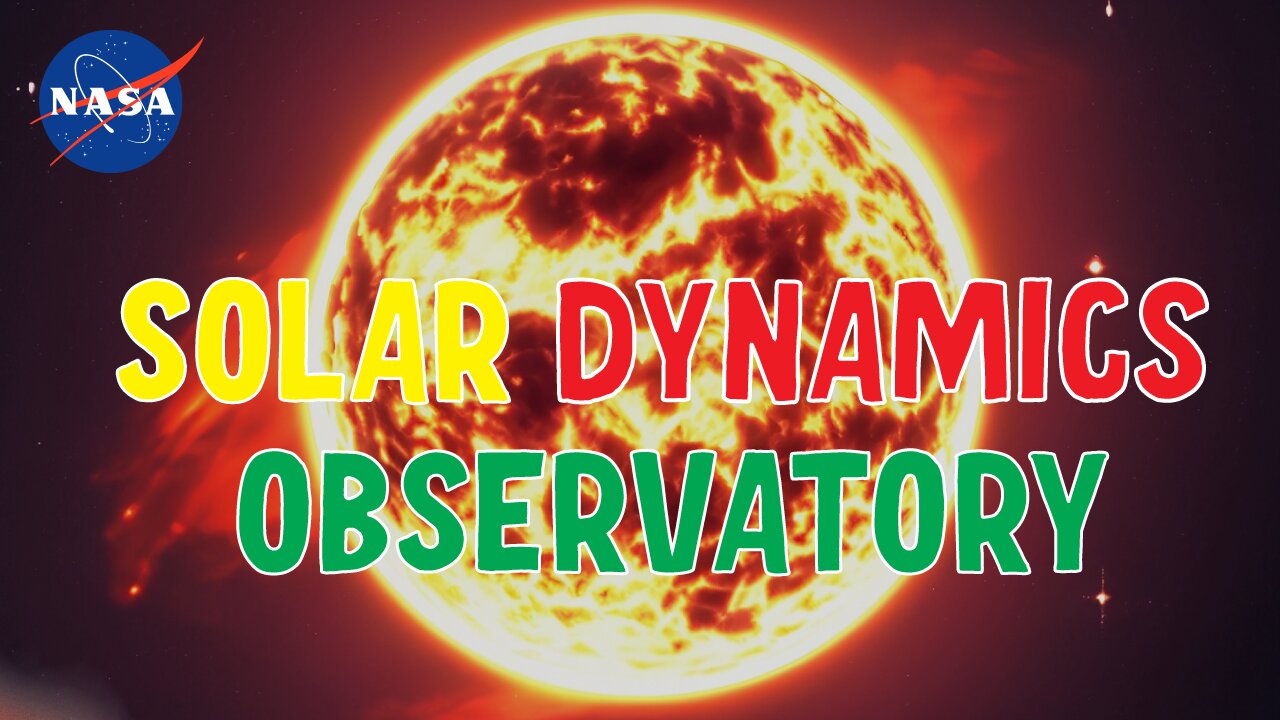Premium Only Content

Six Years of SDO in Stunning Ultra-HD
The sun is in a constant state of change, and NASA's Solar Dynamics Observatory (SDO) is perpetually vigilant. Launched on February 11, 2010, the SDO maintains an uninterrupted watch over the entire solar disk, providing an exceptional perspective on the elegant choreography of solar materials coursing through the sun's outer atmosphere, the corona. The SDO's sixth year in orbit was no exception, and this video presents the entirety of its sixth year, spanning from January 1, 2015, to January 28, 2016, condensed into a captivating time-lapse sequence.
When viewed at its highest quality on YouTube, this video offers an ultra-high-definition experience at 3840x2160 resolution, with a frame rate of 29.97 frames per second. Each frame in this sequence corresponds to a two-hour interval. Alternatively, a downloadable version is available with a faster frame rate of 59.94 frames per second, where each frame represents a one-hour span. The SDO's Atmospheric Imaging Assembly (AIA) captures an image of the sun every 12 seconds in ten different wavelengths. The visuals showcased here are based on the 171 angstroms wavelength, situated in the extreme ultraviolet range, revealing solar material at approximately 600,000 kelvins (equivalent to about 1,079,540 degrees Fahrenheit). In this wavelength, the sun's 25-day rotation becomes prominently visible.
Throughout the video, the sun subtly expands and contracts in apparent size due to the varying distance between the SDO spacecraft and the sun itself. Nevertheless, the imagery remains strikingly consistent and stable, despite the SDO orbiting Earth at a staggering 6,876 miles per hour, while Earth completes its own orbit around the sun at a remarkable 67,062 miles per hour.
Scientists scrutinize these images to gain a deeper understanding of the intricate electromagnetic processes responsible for the sun's perpetual activity, which can occasionally have repercussions closer to Earth. Solar phenomena like flares and coronal mass ejections can disrupt technology in space. Furthermore, studying our nearest star provides valuable insights into the behavior of other stars in our galaxy. NASA's Goddard Space Flight Center in Greenbelt, Maryland, played a pivotal role in constructing, operating, and managing the SDO spacecraft for NASA's Science Mission Directorate in Washington, D.C.
Credit: NASA's Goddard Space Flight Center/Wiessinger
Music: "Tides," a track available from Killer Tracks
#NASADataViz #4KVisualizations #StunningNASA #UltraHD #SpaceExploration #Earth #Sun #Moon #Astronomy #ScientificVisualizations #NASAInsights
-
 14:10
14:10
Dr. Nick Zyrowski
2 months agoThe AMAZING Health Benefits of NAC ( N-Acetyl Cysteine)
10.5K11 -
 5:14
5:14
Gamazda
1 month ago $3.73 earnedWhat Happens When You Mix Piano & Xylophone? Canon in D Like Magic!
12.4K33 -
 13:54
13:54
Mama to Five
14 hours ago $0.64 earnedWHAT I EAT IN A DAY! | FULL DAY OF MEALS AS A MOM OF 5
11.1K4 -
 1:01:18
1:01:18
Futures Edge: Finance Unfiltered with Jim Iuorio and Bob Iaccino
1 day ago $10.10 earnedLIVE Technical Analysis with Mike Arnold
60.9K2 -
 4:56
4:56
SLS - Street League Skateboarding
6 days agoDay in the Life of Pro Skateboarder Mariah Duran | Part 2
14.1K1 -
 14:32
14:32
Chubbyemu
2 days agoA Woman Drank 1 Liter Soy Sauce Colon Cleanse In 2 Hours. This Is What Happened To Her Brain.
25.9K12 -
 2:57:55
2:57:55
FreshandFit
5 hours agoAfter Hours w/ Girls
76.1K27 -
 22:23
22:23
Neil McCoy-Ward
15 hours agoThe Middle Class Just Collapsed...
17.9K7 -
 15:04
15:04
IsaacButterfield
23 hours ago $2.43 earnedThe Most Insane People My Algorithm Keeps Throwing at Me
15.1K4 -
 11:31
11:31
China Uncensored
15 hours agoTop 5 Countries That Sold Out to China
21.5K15